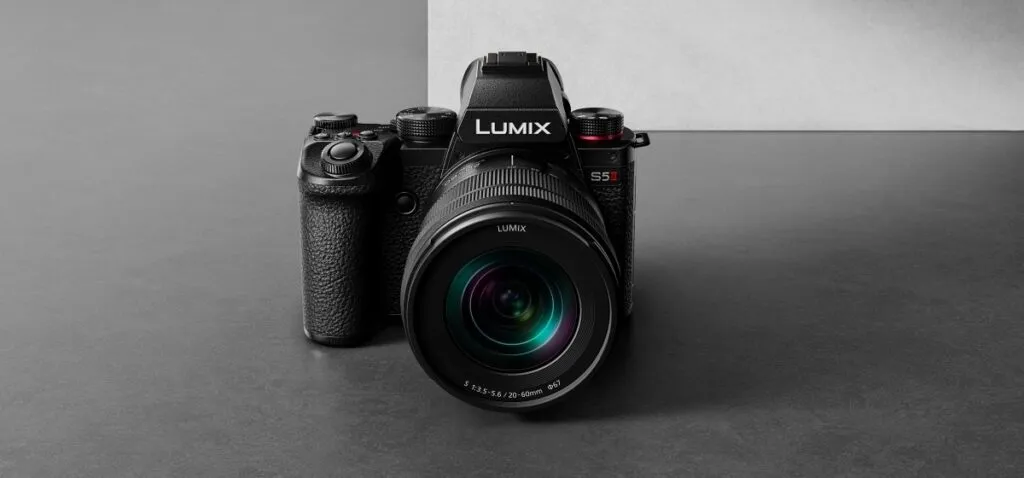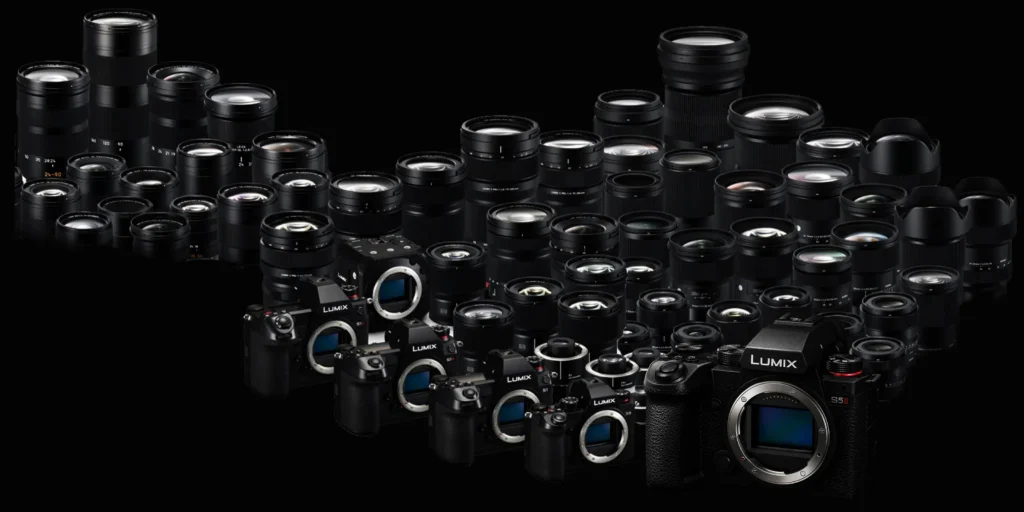
Hello, everybody! Leo Liang here, and welcome back to LensClear! As you guys know, I’m super passionate about photography and videography, and I love sharing my knowledge with you all. Today we’re really going to get into detail with a camera that I’ve been using extensively: the Panasonic Lumix S5 II. We’ll get deep into its 2025 performance, my hands-on experience, and even throw some speculative ideas about the hypothetical Lumix S5 III. Buckle up because this is going to be a long one, but hopefully packed with value.

Lumix S5 II in 2025: Still a Contender?
It’s 2025, and the camera market keeps on changing. The big question is: how does the Lumix S5 II stand up to its newer siblings? Well, the S5 II, upon release, made much noise with its full-frame sensor, improved autofocus-a big leap for Panasonic-and robust video capabilities. It boasts a 24.2-megapixel full-frame CMOS sensor that delivers fantastic image quality, great low-light performance, and good dynamic range. Mated with its powerful image processing engine, this is one of the most detailed images you’ll ever have, with very impressive color representation. Fast forward to 2025, and those core strengths still hold water. Sure, a few cameras these days boast a higher megapixel count or bleeding-edge features, but the S5 II still is an excellent choice for those looking at image quality, great ergonomics, and a versatile hybrid shooting experience.
On the S5 II, the PDAF system was a huge leap finally to put it at par with competitors in the autofocus arena. That alone made it an even more compelling camera for both photography and video. Previously, Panasonic’s contrast-detect AF could be a little sluggish, but this model has been fitted with a phase detection autofocus system, specifically designed, and is now fast and reliable. Much easier to track subjects and sharp focus, it was such an important feature when recording dynamic video. It also improved performance in shooting stills by allowing users to capture those precious, fleeting moments. Another great feature of the S5 II is its in-body image stabilization, or IBIS. It’s critical to shoot stills and video, especially in less-than-ideal lighting, since I am allowed to shoot hand-held without any shaky footage. As I always say, “sharp images are the foundation of great photographs.”
Besides that, the S5 II has an incredible in-camera video recording suite. It can capture internal 6K video at up to 30 frames per second, which is incredibly useful for oversampling in editing. It also does 4K recording at up to 60fps with 10-bit color depth, which will let you get a lot of room for editing with color grading. The recording time is not limited, meaning that you can record until your storage runs out. That alone makes the S5 II one of my go-to cameras. Yes, newer cameras may provide even higher frame rates, 8K capture, or even ProRes codecs in-camera, but it’s truly still a very capable video camera for both enthusiast and professional filmmakers; I’d even say it holds its value as of 2025 and then some. The dual native ISO circuit lets the camera handle low light rather well and be among the more versatile cameras in its class. That gives me a lot of flexibility in different situations, which is why it’s my go-to camera.
Build quality would have to be another point: the S5 II is weather-sealed, quite robust, and ready for outdoor adventures or at least unpredictable weather. It feels solid and secure in my hands. The ergonomics are great, too; the buttons and dials are well-placed. It definitely makes shooting very intuitive. The fully articulating touchscreen is definite handiness, allowing one to film at any angle with ease. In my opinion, the S5 II remains a capable and competitive camera able to satisfy a wide range of creative needs. Whether it is photo or video, it is still more than adequate in 2025.

My Personal Hands-On Experience
Okay, now let’s get a bit more personal and talk about my time using the Lumix S5 II. I’ve had this camera as part of my kit since it came out, and it’s become a go-to for both personal projects and client work. The first thing I have noticed is how comfortable it is to hold. It just sits in your hand perfectly, and the balance of weight feels just right, even with heavier lenses. And speaking of lenses, I have mainly paired this camera with Panasonic’s Lumix S series lenses-the 24-70mm f/2.8 and the 70-200mm f/4. These lenses are just incredible, and the optical quality is top-notch, matching well with the camera sensor. This combination allows me to get shots extremely sharp and detailed, color-matched so exquisitely.
I have employed the S5 II on everything from landscapes to portrait sessions to event videography, and it has served admirably across all such eventualities. The low light capabilities have saved me on several occasions, allowing me to get clean shots with very minimal noise, even when I’m pushing the ISO limit. Even the 5-axis image stabilization has been a godsend when filming on the move. I even had one recent client film shoot where I was running after my subject while filming with the S5 II handheld. The stabilization system handled it like a champ. Impressive, really.
One example that has impressed me with the S5 II: I was on a landscape shoot during sunrise. On the camera, I had the Lumix S 16-35mm f/4 lens. The sun was popping up, and the light was changing very fast. I needed to be able to change settings fast, and the S5 II was allowing me to do just that without any problem. With that one, I captured the great light and color of sunrise, and the results were just so beautiful. The dynamic range in the S5 II enabled me to keep detail in both the highlights and the shadows to create that breathtaking shot that was in my mind. I am impressed with this camera, which is why it is such a workhorse for me.
For video, the S5II has been on quite a few of my commercial sets and personal short-format films. Being able to record in 4K at 60fps 10-bit truly is a godsend in that it gives me incredible leeway with post-processing. There’s just so much detail, great color depth, and stunning dynamic range. I don’t have a single problem editing my footage-the quality of the image doesn’t suffer one bit. I especially love the unlimited recording time; it gives me the freedom to capture full events without having to worry about the camera cutting off. The autofocus system has also been a lifesaver when filming dynamic shots, keeping subjects in focus even when they are moving around.
It is not always smooth sailing, though. I would have loved it if it had an even more robust autofocus tracking system. While it’s a huge step up from previous Panasonic models, it does not hold a candle in regard to object tracking compared to some of its more powerful rivals. Another thing I would want to see is a better battery life. Since I always go with multiple batteries, because when I am filming for extensive periods, it chugs the hell out of the battery. But those are really just nitpicks with an otherwise great camera. My overall experience with the Lumix S5 II has indeed been overwhelmingly positive. It is a reliable, capable, and fairly versatile camera, and I have no problem at all recommending it to any professional or enthusiast-level photographer or videographer.

Speculating on the Lumix S5 III
All right, let’s get to some fun now: looking ahead, talking about what a potential Lumix S5 III might bring to the table. So, Panasonic has not announced a thing, but this is, of course, educated speculation. We can take from industry trends or feedback from a user like me, so this is what potentially could be on the cards, in my opinion:
To begin with, I really do think that we will see a next-gen autofocus system for sure. While the phase detection autofocus on the S5 II was a huge leap forward, I think Panasonic is going to continue pushing this area. Meaning even faster, more accurate, and more reliable AF tracking would especially be enabled when tracking moving subjects. This may include some sort of high-level AI-driven subject detection capabilities, which would just be incredible. That will improve the user experience in both photo and video.
A higher resolution sensor would be another, even better, improvement. While 24 megapixels is great for most, a bump to 30 or 33 megapixels will give way more detail and resolution for large prints and cropping. This shall make it much more competitive among other cameras on the market. It also provides more flexibility during post-processing, allowing more aggressive cropping with much lesser loss in details. However, I also think Panasonic might leave the sensor exactly as it is in the S5 II to protect their low-light performance, which is what they’re known for.
Regarding video, I think internal 8K recording could come. 8K may not be for everyone, but it’s becoming rather standard. I also would not be out of my mind to be surprised if Panasonic adds internal ProRes RAW too. These additional features would further position the camera as an even more capable competitor for professional videographers. The other fix that I wish it had with regards to video is removing the recording limit helpful in the S5 II but needs perhaps a bit more work. But most of all, I also hope for more color profile options both when shooting video and taking photos.
So, the autofocus was already a jump for the S5 II. Therefore, I do think the Lumix S5 III does indeed require a big jump in other directions. Such as more computational photography functions. These could be in-camera processing, for example, improving low light performance or providing innovative new creative modes that enable users to experiment with their creativity. I also suspect that the ergonomics and design of the camera would remain similar. Usually, Panasonic doesn’t change the design too much since they already have a good design that works. I would just like to see a minor improvement with the battery life.
The most important, probably, is that I’d like to see Panasonic keep this camera at an accessible price. It’s one of the things that makes the Lumix S5 II so appealing, and the S5 III has to continue with that trend. It needs to appeal to both enthusiasts and professional users. I really do think that the Lumix S5 III is going to be a beast in terms of performance, with so much potential and promise. Only time will tell when it’s eventually announced.
Conclusion
There you have it-my deep dive into the Panasonic Lumix S5 II in 2025, my personal experiences, and my thoughts on what could come next with the potential Lumix S5 III. The Lumix S5 II is still one incredibly powerful and versatile camera and is something that I highly recommend. It’s very capable both in photo and video. And while we all await the Lumix S5 III with bated breath, the S5 II just keeps on impressing and inspiring me, which is why it continues to be my workhorse camera for all occasions.
Well, again, the best camera is the one that you have with you and one that can let you express yourself as much as possible. Try not to get too caught up in the mad dash for newer, better technology. Develop your skills and create for yourself a body of work-your vision. And as Ansel Adams once said, “You don’t take a photograph, you make it.” Continue exploring, keep creating, and always, thank you for tuning in!
Some speculations about the Lumix S5 III are found in this article. These opinions are mine and based on my understanding. No information was released by Panasonic regarding this camera until the date of this review. Product specifications and details mentioned above in the article for the Lumix S5 II are as per Panasonic official specifications.
References
RTINGS.com: Panasonic LUMIX S5 II Camera Review
Amateur Photographer: Panasonic Lumix S5 II review: raw power, close control
cameralabs.com: Panasonic Lumix S5 Mark II review
Panasonic UK: Specs – LUMIX S5II Full-Frame Camera
Digital Photography Review: Panasonic Lumix DC-S5II full specifications
Backscatter.com: Panasonic LUMIX S5 II Full Frame Mirrorless Camera S5M2
TechRadar: The best video camera 2025: finest choices for filmmakers and videographers
